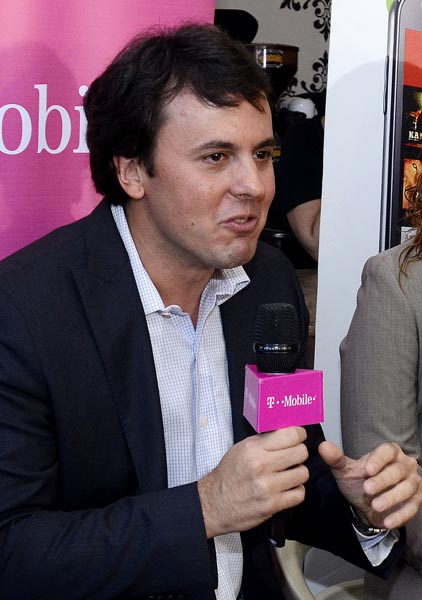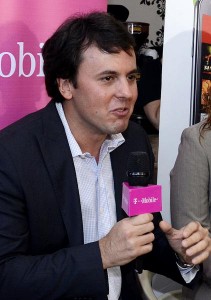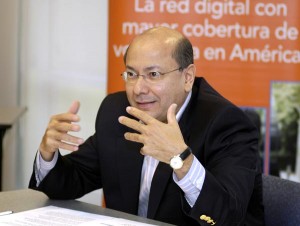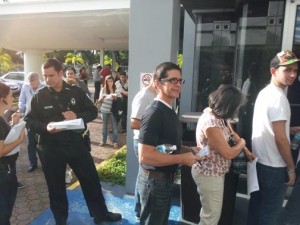P.R.’s lagging wireless usage rate gives room for growth, evolution

Puerto Rico’s 81 percent wireless telephone penetration rate is low in contrast to other parts of the world where mobile phones outnumber people, leaving ample space for growth and further contributions by a sector that “could do more.” However, the impact of an industry is not always in the numbers, but in the quality of services it extends to a population.
Such were the conclusions of two local telecom executives leading the island’s number one and number three wireless carriers, AT&T de Puerto Rico and T-Mobile Puerto Rico.
“Yes, we reached 81 percent, but if you look at it from an industry level, Puerto Rico continues lagging behind the rest of the world, something that unfortunately has a strong economic impact,” said Jorge Martel, general manager of T-Mobile Puerto Rico.
According to a study released by San Diego-based CTIA-The Wireless Association, the number of wireless subscriber connections, 327.6 million, has surpassed the population, 315.5 million, in the United States and its territories, which includes Puerto Rico, Guam and the U.S. Virgin Islands. This puts the U.S. wireless penetration rate at 103.9 percent.
Puerto Rico has an unprecedented 3 million active wireless lines for its estimated 3.7 million residents, according to information from the Telecommunications Regulatory Board and the 2010 Census, respectively. The 3 million is the highest number reported since the TRB began monitoring the wireless sector in 1996.
“The number is high, but could be higher. And the industry has not been free of responsibility in that sense, because we haven’t, possibly until now, adapted to Puerto Rico’s economic reality,” Martel noted. “However, we’re also dealing with an extremely regulated environment, which does not allow adequate development in the industry.”
“I don’t believe we’re seen as an important element in economic development,” Martel concluded.
U.S. had head-start, but quality of service matters most
Meanwhile, José Juan Dávila, general manager of AT&T Puerto Rico, said while economics may be fueling the island’s lagging penetration rate, “we have to understand that wireless technology broke into the U.S. market in 1986, while it wasn’t until 1990 that it arrived to Puerto Rico.”
Still, he said rather than focusing on quantity — or how many wireless phones are out there — Puerto Rico providers should be concentrating on the quality of services they can offer through such devices.
“Penetration is not that relevant. It’s about that, it’s about how Puerto Ricans of all walks of life and sectors are taking advantage of the technology,” he said. “We should be more concerned about how mobile broadband can improve quality of life for Puerto Ricans.”
Hence, he said, it is important for carriers now more than ever to focus on incorporating the latest technology, such as LTE and HSPA, into their networks to offer faster and better infrastructure.
Such cutting-edge networks provide fertile ground for the likes of applications developers to come up with solutions in education, health and security that can eventually extend better services to consumers in every income bracket, Dávila said.
“Putting all of those services at a consumer’s fingertips is what this is about,” the executive noted. “At broadband speeds that are possibly faster than what they can access at home.”
iPhone 4S, other smartphones generate frenzy
Last week was especially active, with the arrival of three smartphone devices offered by T-Mobile, AT&T and Sprint. While T-Mobile unveiled the HTC Amaze 4G and the Samsung Galaxy S II, the latter two providers had a busy Friday with the introduction of the latest Apple smartphone.
“We spent the last two weeks preparing for the arrival of this handset. We had people waiting outside our stores for several hours before we opened and the iPhones sold quickly,” said Dávila. “We expected that, but things flowed well.”
The arrival of the iPhone 4S marked the first time AT&T had competition for the device in Puerto Rico, where Sprint and Claro will also offer it.
Yoly Torres-Cuesta, marketing executive for Sprint, said within three hours, the carrier had sold all of the devices it had in stock Friday, but more are expected to arrive today.
“At least 80 percent of all of the sales we registered Friday were new customers who came in looking for the iPhone,” she said. “Customers are happy, and are signing up to Sprint saying our customer service is unique and they are happy for the opportunity to have an unlimited data plan that starts at $79.99, which no one else is offering.”
















